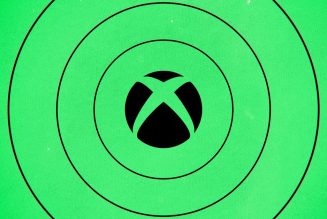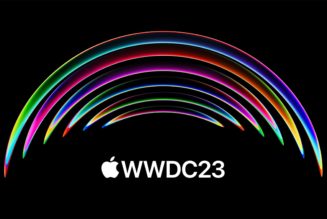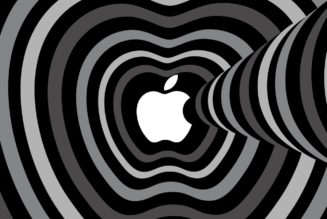Some of the first credible reporting about the “Apple iWatch” I remember reading described it as being “made of curved glass.” The eventual Apple Watch did use curved glass to an extent, of course, but it wasn’t really a defining feature of the product. After all, in 2013 The New York Times said Apple’s watch was expected to “stand apart from competitors based on the company’s understanding of how such glass can curve around the human body.” I was imagining something a little more futuristic than what we got.
Something that looked more or less like the Nubia Watch, as it happens. Nubia’s new smartwatch is essentially a bracelet dominated by a large flexible OLED screen that curves halfway around your wrist, which is technically pretty impressive. After wearing it for a couple of weeks, I think it’s probably for the best that the Apple Watch turned out the way it did. But if you want your wearable technology to signify engineering ambition above all else, it could be worth a look.
The Nubia Watch just launched on Kickstarter with prices starting at $199, and its campaign has already been funded. The Chinese version of the device, which I’ve been testing, is already available at retail and runs different software, so don’t take this as a review — these are just my impressions of the hardware in case you’re thinking about backing.
:no_upscale()/cdn.vox-cdn.com/uploads/chorus_asset/file/21769030/DSCF7364.jpg)
The first thing to note is that it’s pretty chunky at 14.2mm thick, though it does at least feel solid with its largely metal build. It’s rated for IP54 water and dust resistance, and it’s reasonably comfortable to wear, though I wouldn’t say I love the way it looks. This is an unabashedly techy device, but it’s at least a little sleeker than Nubia’s previous take on the concept, the Alpha.
The screen is 4 inches diagonal and has a resolution of 960×192; you can see the pixels if you look closely, but it’s sharp enough at regular watch viewing distances. It can be a little difficult to see outside, and there’s no automatic brightness adjustment, but otherwise it’s as punchy and contrasty as you’d expect from a good OLED panel. The display is covered in flexible glass from Schott, which is the company that worked with Samsung on its ultra-thin glass for foldable phones. It bends easily around your wrist, and I haven’t seen any scratches or other damage appear yet.
The rest of the Nubia Watch’s spec sheet is somewhat less ambitious. There’s an aging Snapdragon Wear 2100 processor, which isn’t a great sign, and a 425mAh battery. (Nubia says it should last around 36 hours on a charge; I can’t speak for the global model yet, but based on my experience I’d say you’ll definitely need to charge it every day.). It also carries the usual array of sensors for heart rate, motion, and location, and the Watch has typical basic fitness tracking capabilities. In China, it can work as a standalone phone with LTE eSIM support.
:no_upscale()/cdn.vox-cdn.com/uploads/chorus_asset/file/21769064/DSCF7366.jpg)
:no_upscale()/cdn.vox-cdn.com/uploads/chorus_asset/file/21769073/IMG_3590.jpg)
The custom software is pretty basic, at least on this Chinese model. There’s no way to act on notifications or customize the included watch faces, though you can edit text for a “marquee” mode that continuously scrolls across the screen. While there’s a lot of functionality here on paper, it doesn’t always work the way you might expect. The music app, for example, only supports tracks that have been loaded onto the watch’s storage — you can’t use it to control playback on your phone.
The overall UI is very simple — swipe up on the watch face for notifications, down for quick settings, and left or right to access the built-in apps. As you’d expect, it’s designed to maximize the extreme verticality of the screen, so there tends to be information displayed around half of your wrist. But in practice, this doesn’t make much difference to usability. For instance, while the weather app does show a full week’s forecast at once, you still have to bend your wrist to see more than the central part of the screen. Is that really more convenient than swiping on a normal watch?
Watches are personal devices that allow their wearers to express themselves. In the case of the Nubia Watch, it communicates that you are interested enough in flexible OLED screens that you want to be one of the first people in the world to wrap one around your wrist and are willing to back the project on Kickstarter. If that sounds like you, I salute you, but you probably shouldn’t expect a sleek product. We’ll check out the global version in more detail when it’s available.










